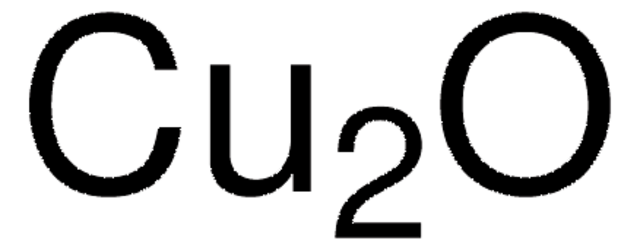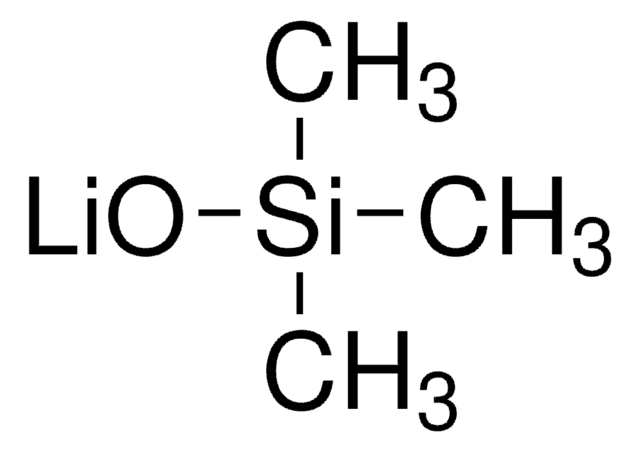203130
Copper(II) oxide
99.999% trace metals basis
Synonym(s):
Cupric oxide
Sign Into View Organizational & Contract Pricing
All Photos(3)
About This Item
Empirical Formula (Hill Notation):
CuO
CAS Number:
Molecular Weight:
79.55
EC Number:
MDL number:
UNSPSC Code:
12352303
eCl@ss:
38150108
PubChem Substance ID:
NACRES:
NA.23
Recommended Products
Quality Level
Assay
99.999% trace metals basis
form
powder
application(s)
battery manufacturing
SMILES string
[Cu]=O
InChI
1S/Cu.O
InChI key
QPLDLSVMHZLSFG-UHFFFAOYSA-N
Looking for similar products? Visit Product Comparison Guide
Related Categories
Signal Word
Warning
Hazard Statements
Precautionary Statements
Hazard Classifications
Aquatic Acute 1 - Aquatic Chronic 1
Storage Class Code
13 - Non Combustible Solids
WGK
WGK 3
Flash Point(F)
Not applicable
Flash Point(C)
Not applicable
Personal Protective Equipment
dust mask type N95 (US), Eyeshields, Gloves
Choose from one of the most recent versions:
Already Own This Product?
Find documentation for the products that you have recently purchased in the Document Library.
Customers Also Viewed
Auriane Fifame Oussou-Azo et al.
Nanomaterials (Basel, Switzerland), 10(5) (2020-05-28)
Copper has been used as an antimicrobial agent for over a century and is now being added to commercial fungicides. Nanomaterials have attracted much attention due to the special properties they have over their bulk form. We studied nanostructured copper
Sumanta Kumar Meher et al.
Nanoscale, 5(5), 2089-2099 (2013-02-06)
In the quest to enhance the selectivity and sensitivity of novel structured metal oxides for electrochemical non-enzymatic sensing of glucose, we report here a green synthesis of unique sandwich-structured CuO on a large scale under microwave mediated homogeneous precipitation conditions.
Chengyi Hou et al.
Nanoscale, 5(3), 1227-1232 (2013-01-11)
We report a Cu(2)O nanocrystal-reduced graphene oxide hybrid that is dispersible in water and has anticancer activity under both visible and near-infrared light irradiation. In contrast to the highly efficient killing of both normal and cancer cells initiated by the
Pierre-Emmanuel Buffet et al.
Environmental science & technology, 47(3), 1620-1628 (2012-12-18)
The fate and effects of CuO nanoparticles (CuO NPs) were examined in endobenthic species (Scrobicularia plana , Hediste diversicolor), under environmentally realistic conditions in outdoor mesocosms (exposure to Cu at 10 μg L(-1) in particulate (CuO NPs) or soluble salt
Yunxin Liu et al.
Chemistry (Weinheim an der Bergstrasse, Germany), 19(13), 4319-4326 (2013-03-01)
How to extend ultraviolet photocatalysts to the visible-light region is a key challenge for solar-driven photocatalysis. Herein, we show that ultraviolet ZnO photocatalysts can present high visible-light photocatalytic activity when combined with CuO quantum dots (QDs; <3 nm). Theoretical analysis demonstrates
Articles
An article concerning self-propagating reactions induced by mechanical alloying, presented by Sigma-Aldrich.com.
Our team of scientists has experience in all areas of research including Life Science, Material Science, Chemical Synthesis, Chromatography, Analytical and many others.
Contact Technical Service




